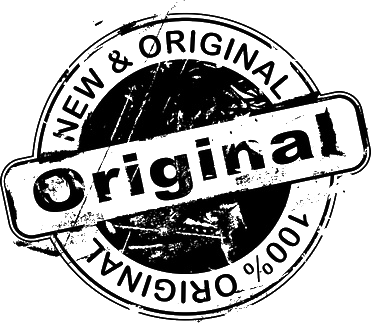Making a good picture is time-consuming process and they are rare. It is much easier to take somebody else’s work and use it for a website or an ad. Especially, because it is so easy now: just a couple clicks using your mouse. In most cases, the author of the photo gets no credit for her image.
And what? Doesn’t everybody download MP3s and movies from internet for free? Sometimes not.
Lara Jade Coton 19, a British photography student, found that her self-portrait had been taken and used to promote a pornographic video. The copyright infringement caused a huge damage to her sense of privacy.
Rebekka Guðleifsdóttir, an Icelandic photographer, discovered that some photos she placed on Flickr were being sold on eBay by a UK printing company. She was able to calculate the value of the prints sold at almost $5,000.
People use visible watermarks to prevent misuse but this kind of image protection is being highly criticized. Some photographers stop reviewing other photographers’ work if they watermark their pictures.
Thomas Hawk says “Earlier today I caught myself unfollowing someone on 500px because I clicked through on their photo and found this garish looking signature on their photograph. I know I’ll probably take a lot of heat for this, but I HATE watermarks and signatures on photos and many of the particularly bad borders and frames as well — so much so that more and more these days I’m not faving them or commenting on photos that I find them on and have actually started unfollowing some people who use them.”
So what makes people hate watermarked pictures?
Watermark ruins photograph. Unfortunately, this is true. If you are not careful about where and how you place your watermark, it will look amateur and will detract from your photo. Watermarking has to be done very carefully to make it unobtrusive and still protect your rights.
Watermarks can be removed. Most pro designers and photographers have enough skills to stamp over the watermark and hide it. However, most people skills don’t run further that resizing, copying and cropping. That means an edited photo looses a lot of its beauty.
Also, the DMCA section of the Copyright Act provides an even better reason to use watermarks.
Attorney Carolyn E. Wright says: “Section 1202 of the U.S. Copyright Act makes it illegal for someone to remove the watermark from your photo so that it can disguise the infringement when used. The fines start at $2500 and go to $25,000 in addition to attorneys’ fees and any damages for the infringement.”
- Top photographers don’t watermark their photos. This happens because their style is absolutely recognizable even without a copyright notice nearby. Being prominent they can afford some loses of low-res pictures. They always watermark not yet paid photos working on assignment.
Eric Paparatto says “The difference between me and Andel Adams is the the latter is world famous and his work is instantly recognizable as such. No one can grab his images and pass it off as their own. The same is true for many of the better photographers – if I were to upload to Flickr a Cartier Benson, an Ansel Adams, or even a Scott Bourne or Thomas Hawk, enough people would recognize it and not let me get away with it. The photos of famous or semi-famous photographers are thus “protected” even sans watermark.
But if someone were to lift some of mine for example, I don’t have that kind of notoriety to depend on. The crime would probably go unnoticed and who knows? Pretty much the only tool available to me to get the same kind of “protection” enjoyed by Ansel Adams is a watermark. Or get to be as famous as him. But that’s not likely.”
Benefits of Watermarking
Watermarks placed over your images may provide considerable benefits:
- Watermarks work for your promotion. It allows prospective clients to find you even if they a photo somewhere on the Internet.
Jim Goldstein says “I’m a firm believer in ensuring proper attribution of a photo and notifying viewers that my photography is copyrighted. This addresses a high priority of mine to protect my photographic work from a legal perspective, in conjunction with my formal copyright filings with the U.S. Library of Congress. In essence addressing a long term need of mine. On the flip-side the concept of using watermarks as a “calling card”, including my name and web site URL, addresses a short term need to notify others where to find my work and learn more about my services.
Case in point last week I had two instances where prospective clients found my work on sites infringing my photography.”
Watermarks are supporting evidence of your authority. If you take somebody to a court, you will have to prove that you own intellectual rights on particular photographs. If you fail to prove your copyright ownership, you won’t be able to get pay for a stolen work and will have to pay court dues. Having hi-res unwatermarked images will prove your ownership.
Monet, Rembrandt, Ivan Aivazovsky and many other famous painters sign their art on the front and it still helps to recongize the author of painting.
Watermarked photos are less likely to be stolen. There are 5 billion images on Flickr. If someone is going to steal a picture, she will steal unwatermarked picture because there are a lot to choose from and it is one hundred times easier than removing a watermark.
Watermarking is easy! You can use batch actions in Photoshop, use free watermarking software or professional watermark maker like Visual Watermark. Using any of these methods you can watermark all your photos easily.
Personally, I have a strong belief that we must remove our images from the “easy” sector. More details here - How to watermark photos.
 Visual Watermark
Visual Watermark
 by
by 